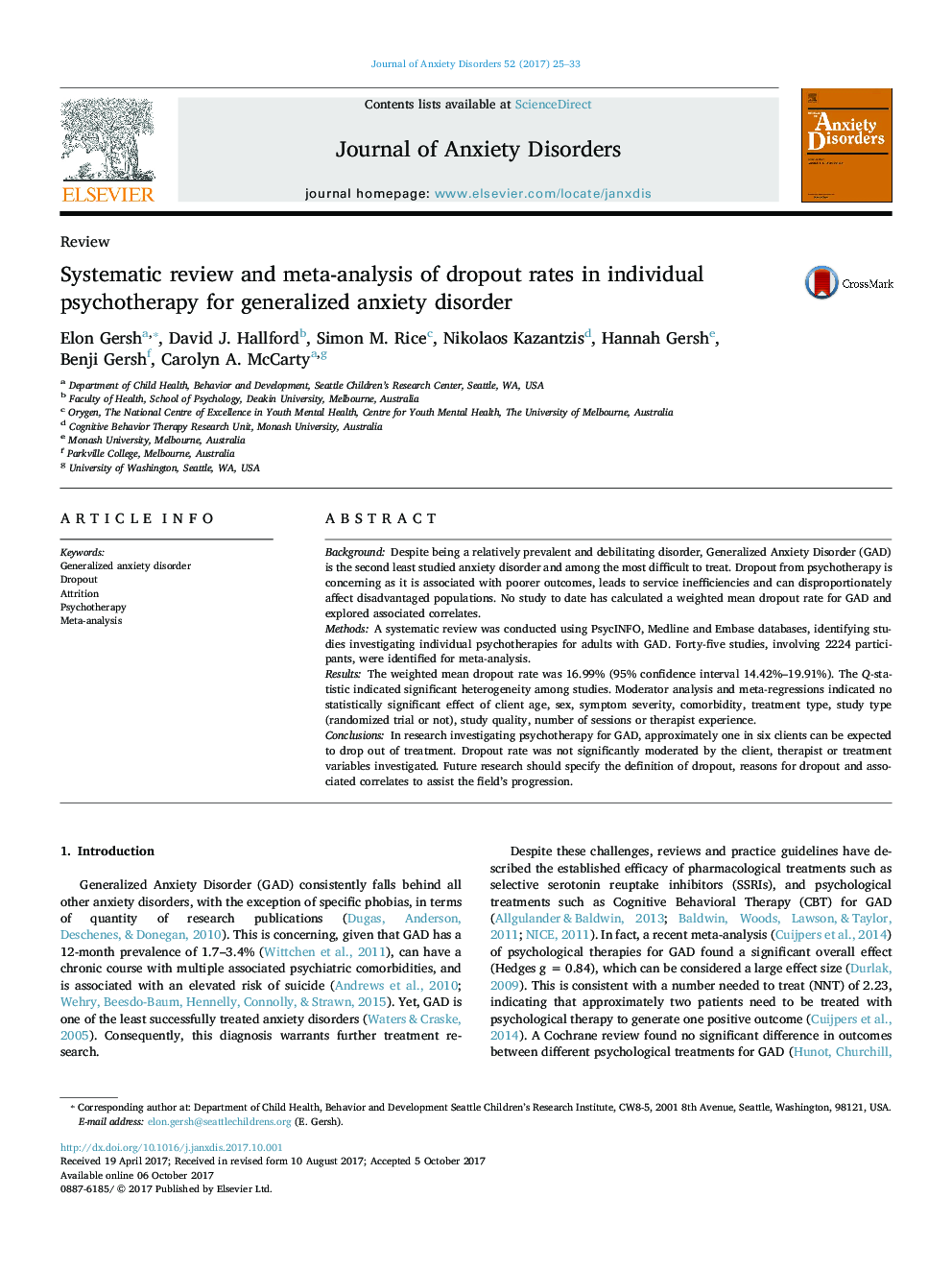| Article ID | Journal | Published Year | Pages | File Type |
|---|---|---|---|---|
| 5038821 | Journal of Anxiety Disorders | 2017 | 9 Pages |
â¢A meta-analysis explored dropout rates in psychotherapy for Generalized Anxiety Disorder.â¢The weighted mean dropout rate was 16.99%, approximately one in six patients.â¢Dropout rate was not significantly moderated by client, therapist or treatment variables.
BackgroundDespite being a relatively prevalent and debilitating disorder, Generalized Anxiety Disorder (GAD) is the second least studied anxiety disorder and among the most difficult to treat. Dropout from psychotherapy is concerning as it is associated with poorer outcomes, leads to service inefficiencies and can disproportionately affect disadvantaged populations. No study to date has calculated a weighted mean dropout rate for GAD and explored associated correlates.MethodsA systematic review was conducted using PsycINFO, Medline and Embase databases, identifying studies investigating individual psychotherapies for adults with GAD. Forty-five studies, involving 2224 participants, were identified for meta-analysis.ResultsThe weighted mean dropout rate was 16.99% (95% confidence interval 14.42%-19.91%). The Q-statistic indicated significant heterogeneity among studies. Moderator analysis and meta-regressions indicated no statistically significant effect of client age, sex, symptom severity, comorbidity, treatment type, study type (randomized trial or not), study quality, number of sessions or therapist experience.ConclusionsIn research investigating psychotherapy for GAD, approximately one in six clients can be expected to drop out of treatment. Dropout rate was not significantly moderated by the client, therapist or treatment variables investigated. Future research should specify the definition of dropout, reasons for dropout and associated correlates to assist the field's progression.
